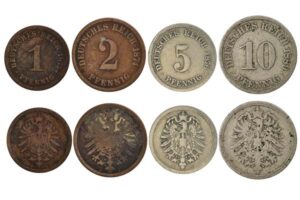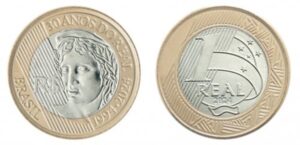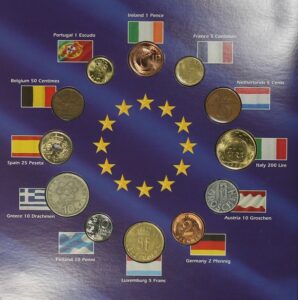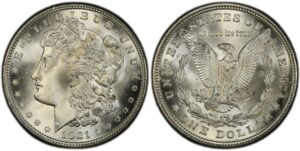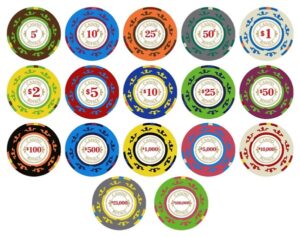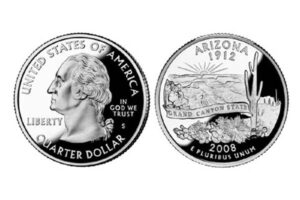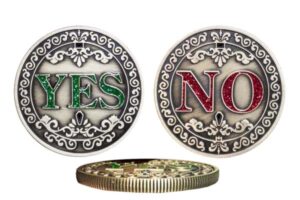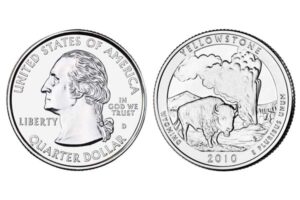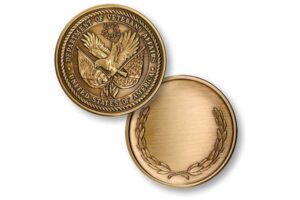
Gold shopping in Europe can be confusing. I once felt stuck with steep taxes and hidden fees. I discovered an easier way to find the perfect place to buy gold.
Switzerland often ranks highest due to zero VAT on physical gold1. This policy helps me buy bullion without paying extra tax. That advantage makes Switzerland a prime choice over other European countries.
I remember my early research days when I searched for the best European country for gold. I learned crucial details that shaped my approach. Now, I want to share these discoveries and explore deeper questions about European gold coins.
Which gold coins are used in Europe?
European gold coins vary across regions. I began collecting them to understand their origins. These coins blend historical significance with investment potential, which fascinates coin enthusiasts and casual buyers alike.
Popular European gold coins include Belgium 20 Francs (1914)2, French Napoleon coins, British Gold Sovereigns3, and Austrian Coronas. These examples show Europe’s rich minting tradition. Each design holds historical charm, which many collectors and investors appreciate for both aesthetics and value.
Now, let’s see each coin more closely.
Belgian 20 Francs (1914)
Belgian 20 Francs coins from 1914 stand out for their vintage aura. They symbolize Belgium’s monarchy and economic evolution. The designs highlight King Albert I’s profile and traditional Belgian emblems. Many collectors prize these coins for their limited minting and historical importance.
French Napoleon Coins
French Napoleon coins often depict Napoleon III. Their intricate artwork captures France’s imperial era. I find them interesting because each coin reflects France’s heritage and shifting regimes. Demand remains solid among collectors who value the blend of history and gold content.
British Gold Sovereigns
British Gold Sovereigns are iconic worldwide. They feature the monarch’s portrait and the famed Saint George slaying a dragon design. Their consistent weight and purity make them trusted investments. I see them as a classic symbol of Britain’s stability and enduring tradition.
Austrian Coronas
Austrian Gold Coronas pay homage to the Austro-Hungarian Empire. They often showcase Emperor Franz Joseph I. I like their fine details that give insights into Austria’s storied past. They also attract investors for their tangible gold value and cultural resonance.
| Pièce de monnaie | Country | Notable Feature |
|---|---|---|
| 20 Francs (1914) | Belgium | King Albert I’s profile |
| Napoleon | France | Imperial imagery |
| Gold Sovereign | Britain | Saint George design |
| Gold Coronas | Austria | Emperor Franz Joseph I portrait |
This table compares basic facts about these prominent European gold coins. Each coin mirrors its homeland’s identity, granting collectors diverse historical perspectives.
Is Nordic gold valuable?
I once wondered if Nordic gold4 was real gold. It looks impressive, but my research revealed a surprise. This knowledge changed how I view certain European coins and materials.
The term “Nordic gold” can mislead. It contains no actual gold. Its value lies mostly in collector appeal rather than metal content. Some rare coins might fetch higher prices, but that comes from scarcity, not precious metal value.
Nordic gold is a copper alloy5. It includes copper, aluminum, zinc, and tin. That composition creates a golden color. I tested some Nordic gold coins and realized they lack gold’s weight and luster. I also learned about the production benefits. These coins resist tarnishing and reduce metal costs. Some coin enthusiasts still collect them, especially limited-edition versions. However, their value rarely matches pure gold coins.
Why do mints use Nordic gold?
Many mints choose it to cut costs. I see it as a way to produce durable coins with minimal maintenance. It is not a precious-metal solution, but it meets circulation demands.
Should I invest in Nordic gold coins?
For me, Nordic gold coins are more for casual collecting. Their worth doesn’t hinge on gold markets. Serious gold investors often prefer bullion or internationally recognized gold coins with established purity standards.
Which euro coin is made of gold?
I once mixed up euro coins with gold. They have a two-tone look, and I assumed gold was present. But actual euro coins rely on special metals, not pure gold.
Standard euro coins use alloys, not pure gold. The 10-, 20-, and 50-cent coins use Nordic gold alloys. The 1- and 2-euro coins feature bi-metallic layers6 to deter counterfeiting, but they contain no real gold.
Euro coin composition focuses on durability and security. I read that the outer ring for 1- and 2-euro coins is nickel-brass, while the center is cupronickel. That contrast in color helps people recognize genuine coins. In my opinion, the emphasis on security is vital. Europe has many cross-border transactions, so a reliable currency system matters.
Common misconceptions
Some travelers or new collectors assume these coins contain actual gold due to their color. I used to think the same. But once I learned about Nordic gold and bi-metallic layers, I realized it is more about functionality and design. These coins hold more monetary value than precious metal worth.
Are there other European countries with good gold deals?
I often wondered if any countries rival Switzerland’s tax benefits. Some nations offer interesting incentives. However, each place has unique rules that can shape my strategy for buying gold.
Yes. Austria provides stable gold markets and minted coins like Philharmonics. Germany occasionally offers tax advantages for holding periods over one year. Italy has rich numismatic history. Yet, none fully match Switzerland’s zero VAT on gold bullion.
I explored Germany, Austria, and Italy in my search for good deals. Germany has a capital gains exemption if I hold physical gold for at least one year, meaning I can sell without incurring taxes on profits. That rule helped me see Germany as a potential long-term investment option. However, immediate purchases and sales can still involve VAT on certain gold products. So I always confirm the specifics before I commit.
Austria’s gold tradition
Austria’s Philharmonic coins capture the nation’s musical heritage. These coins are recognized worldwide. I feel comfortable with Austrian markets, as they have transparent regulations and are known for quality minting. In Vienna, some shops specialize in collector coins, which might carry premium prices due to rarity or design.
Italian numismatic gems
Italy’s history includes ancient Roman currency and modern commemorative coins. I once visited a coin fair in Rome and discovered several limited-edition pieces. Those coins had cultural and artistic value, but not all were pure gold. Italy also has VAT on certain gold items, so I checked official guidelines.
In the end, I realized each country has a unique mix of history, regulation, and potential tax breaks. For me, Switzerland still shines brightest due to its zero VAT on physical gold. But Germany, Austria, and Italy also have compelling angles for collectors or investors willing to navigate their distinct systems.
My story with Mark Chen?
I remember meeting Mark Chen, a buyer from France. He was 50 and knowledgeable about scenic spots. He needed custom tourist coins with high quality and fair pricing.
Mark values strong communication and on-time delivery. He faced missed sales seasons before, and that cost him profits. By addressing these problems, I helped Mark design and receive his coins promptly. He now avoids delays and meets tourist demands in peak seasons.
I worked with Mark to finalize designs that matched famous landmarks. I kept communication simple and clear. We used secure payment methods and reliable shipping routes. Mark shared that our streamlined process saved him time and prevented stress. He also mentioned my design input filled the gaps in his aesthetic sense. Now, Mark’s coin business thrives during vacation peaks. He says this partnership proved that buying from China can be smooth when the supplier understands quality demands.
My recommended factory for custom gold-plated coins
I run a factory in China called INIMAKER. We specialize in medals, badges, commemorative coins, and challenge coins. Our business is strictly B2B and wholesale. We have four production lines and serve clients across the United States, Russia, France, the United Kingdom, and other regions. I see a need for custom gold-plated silver coins, whether for educational demonstrations or for hobbyists’ private collections. We design coins that highlight detailed engraving, unique shapes, and personal themes. If you want to explore deeper customization, you can contact me at info@inimaker.com or visit www.inimaker.com. I am always open to new projects.
Conclusion
Gold in Europe offers varied opportunities. Switzerland stands out for low taxes. Yet each country has unique coin traditions and metals. I encourage thoughtful research before buying. I hope my journey sparks your own exploration of Europe’s diverse gold market.
-
Understanding Switzerland's zero VAT policy can help you save significantly on gold purchases, making it a must-know for investors. ↩
-
Exploring the history behind Belgium 20 Francs (1914) coins can enhance your appreciation for their value and rarity. ↩
-
Learning about British Gold Sovereigns' consistent weight and purity can guide you in making informed investment decisions. ↩
-
Explore the unique composition and benefits of Nordic gold, a cost-effective and durable alternative to precious metals in coin production. ↩
-
Discover how copper alloys, like Nordic gold, offer durability and cost efficiency in the minting of coins, making them ideal for circulation. ↩
-
Learn about the innovative use of bi-metallic layers in euro coins to prevent counterfeiting and ensure the integrity of the currency. ↩

